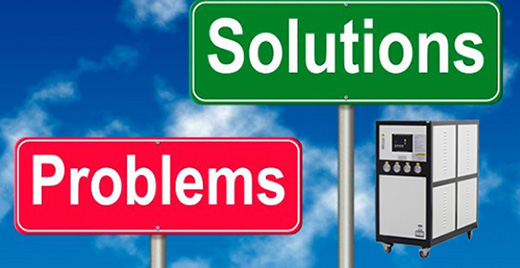
Even when regularly inspected and maintained, the performance of your chiller may degrade or deteriorate over time. Pumps can fail; process lines can clog; refrigerant can leak; any number of problems associated with component aging or changing environmental conditions may occur.
Common Chiller Faults
Most modern chillers display a fault or error code when conditions affecting performance are detected. These codes are usually fairly specific and will help you quickly diagnose problems.
Low Temperature Alarm
The process temperature has fallen below a user-set temperature value. This may be due to insufficient heat load or too high of a low temperature alarm setting.
High Temperature Alarm
The process temperature has risen above a user-set temperature value. This may be due to too high a heat load or too low of a high temperature alarm setting.
Over-Temperature Safety Alarm
Indicates that the process temperature has exceeded a factory or user-set safety cutoff. This may be due to a problem with the refrigeration system or a safety setting that is set at too low of a temperature.
Low Liquid Level Alarm
The level of coolant in the reservoir has fallen below an acceptable level. This may be due to evaporation or leaks in the circulation system.
Low Flow Alarm
The fluid flow rate has dropped below a minimum factory or user-set safety setting. This may be due to restrictions or blockages in the process lines or equipment, a failing pump, insufficient coolant, or a minimum flow rate setting that is set too high.
High Pressure Alarm
The process pressure has risen above a factory or user-set safety setting. This alarm may be due to restrictions or blockages in the process lines or equipment. The installation of a pressure bypass valve may be helpful in applications with naturally water chiller high pressure.
High Ambient Temperature Alarm
Ambient temperature has risen above a factory or user-set safety setting. This is usually due to changes in environmental conditions, such as a new location or the installation of other heat generating equipment close to the chiller.
If there is any other problem with the water chiller, please contact us.
